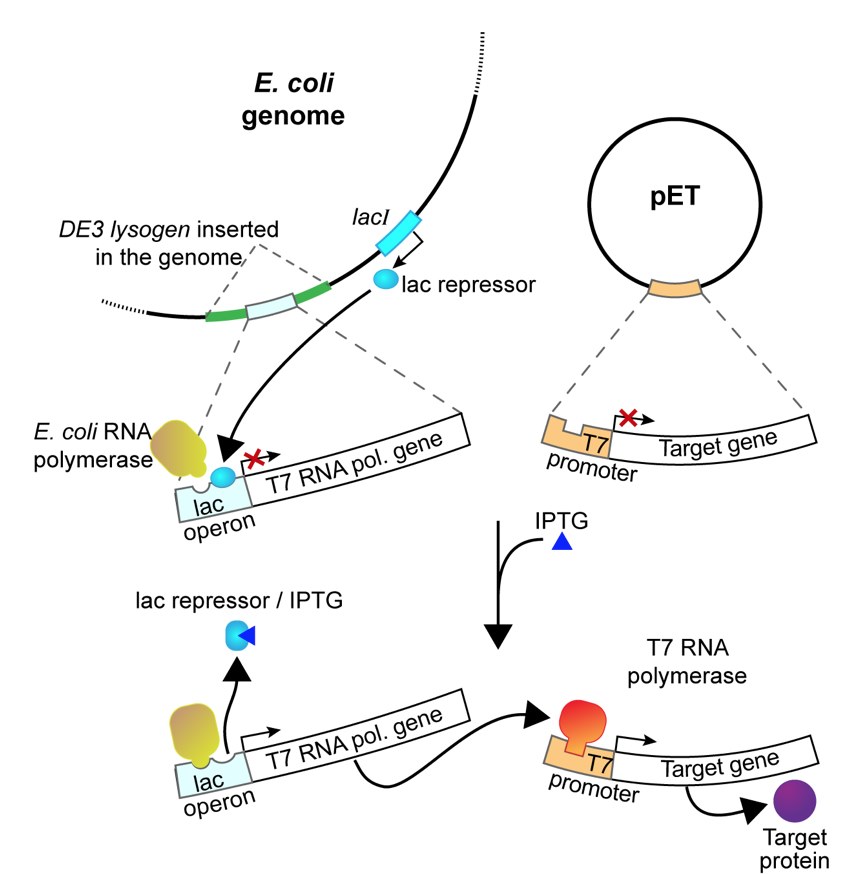Lab 6: BACKGROUND
Overexpression in E. coli
The pETblue2 vector you cloned HCAII into during Lab 4 contains a part of the lac operon that allows regulation of protein expression from this vector. The vector contains sequences encoding the gene of interest (HCAII in the case of this lab), the lac operator and the repressor that binds to the operator and prevents unwanted transcription of the gene.

In this experiment, you will use isopropyl-1-thio-β-D-galactopyranoside (IPTG), a commonly used inducer for the lac operon, to induce HCAII expression from our clones. Unlike allolactose, the natural inducer of the lac operon, IPTG cannot be metabolized and will thus induce the operon to a higher level. IPTG is often used to induce expression of many different recombinant proteins in E. coli. In our case, IPTG will be used to induce the expression of T7 RNA polymerase, which will then transcribe the His-tagged HCAII gene you cloned into pET-blue2. These RNAs will then be translated into His-tagged HCAII protein.

Cell Growth
E. coli experience three phases of growth shown in the figure below:

Cells are happiest during the “log” phase, when they experience logarithmic growth. We want to induce cultures to express protein when they are in mid- to late-log phase. We are also only growing the cells for 2.5 hours. Therefore, you should not expect to see an entire growth curve! Think about what you do expect to see, as you will be asked in your lab report to comment on whether your curves are the expected shape.
This is an interesting article that can serve as one reference: IPTG reference article
